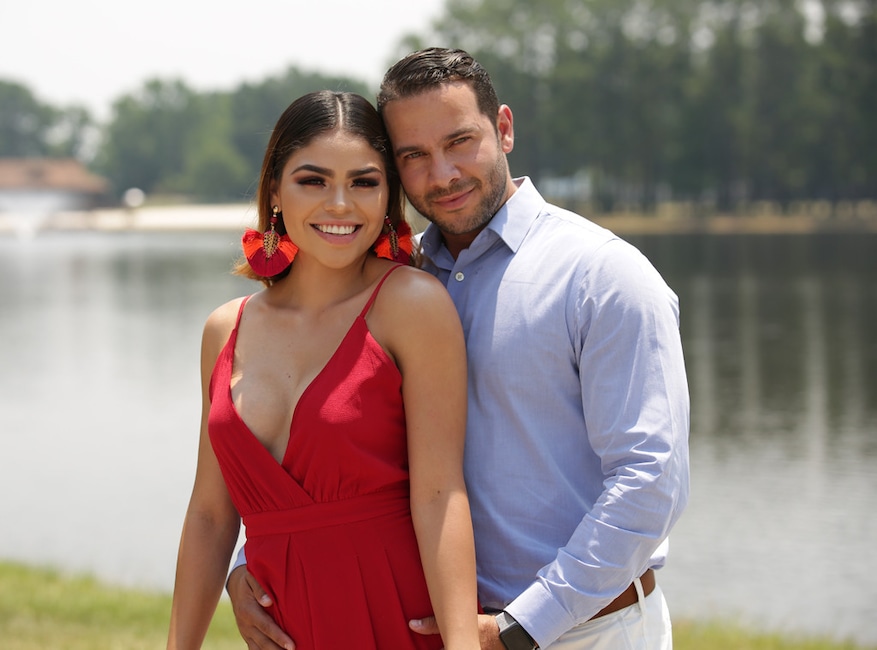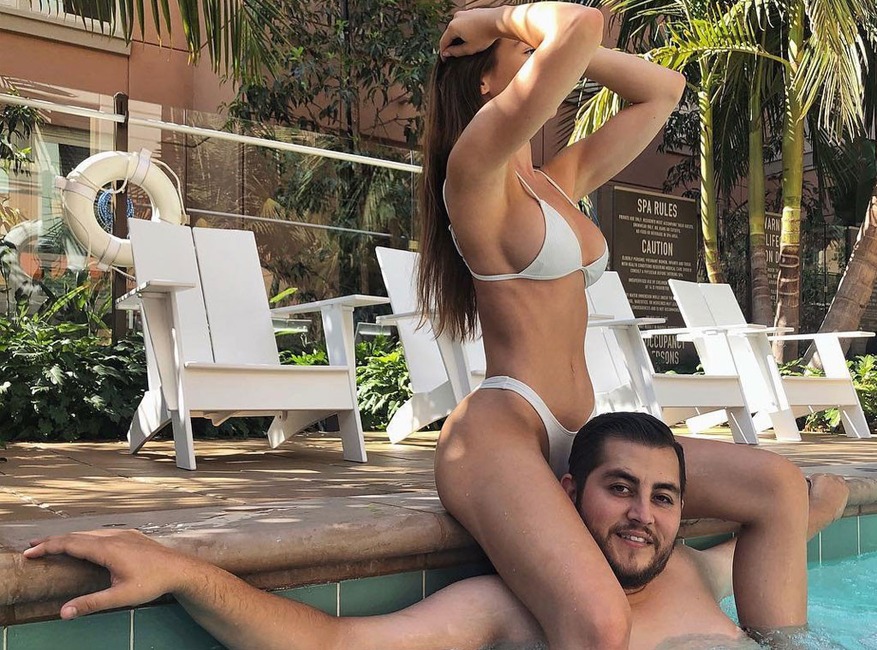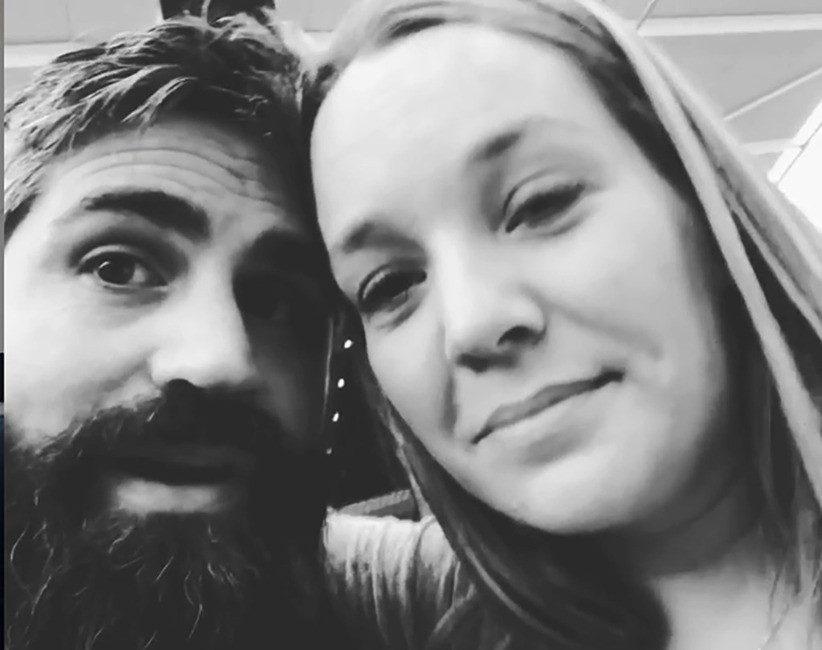Can’t get enough of 90 Day Fiancé? Welcome to the party. We have cookies.
TLC’s reality hit is the No. 1 show on cable on Sunday night, with viewers unable to resist the relationship and family drama that comes once an Americans who fell in love with a foreigner.
90 Day Fiancé first premiered in 2014, and while the concept seems like a sure thing—couples must decide whether or not to get married in the 90 days after securing a K-1 visa—it was almost a completely different show than the one we’re all obsessed with now.
Ahead of the season six “Tell-All” special’s dramatic conclusion tonight, featuring the fallout from tumultuous couple Larissa Dos Santos Lima and Colt Johnson‘s late arrival, we’re dishing out behind-the-scenes secrets from the reality hit, including how much the stars are (or aren’t paid), how the casting process really works and whether or not any of the scenes are scripted…

TLC
The Origin Story
Fun fact: no networks originally wanted the show.
“It was something like International Love, but that was not the title because that’s a terrible title, and we brought around the show. It was going to chronicle Americans who have met people online as they visited these international relationships,” executive producer Matt Sharp told Kate Casey on her podcast, Reality Life with Kate Casey. “We went around town to all the different networks…all of the female networks looked at the pitch and thought it felt too male, and all the male networks thought it felt too female.”
After going back to the drawing board, they decided to make it a male-skewing show, re-titling it “Bachelor Wars: Russia.” The idea would be following men going abroad to meet women. Still, the male networks didn’t bite, so they then decided to rework it and knew they had their show when they learned of the K-1 visa process and the 90 day time-frame limitations. “Thank you television format gods!” Sharp said.
But then it got rejected. Again. The project seemed dead, until Sharp met with his friend, who happened to be an executive at TLC who had never heard the pitch. After watching the reel, his friend was in. And the rest is history.

TLC
Finding the Couples
As for how the network and studio find the star-crossed lovers (in most cases, anyway) that make up the show’s central couples, Sharp revealed the one stipulation to even be considered during his interview: “These are people that are very much in the queue for a visa already.”
After that, you have your standard reality TV casting process (a.k.a lots of interviews), where they want authenticity—”warts and all.”
“We always wanted this to be a super-authentic, warts and all, look at love in this amazing world, very raw, the producers we brought in…a lot of them came from the Teen Mom world,” Sharp said on the Reality Life podcast. “There’s an authenticity to that show, too. We wanted to do something that didn’t just show one side of love. We wanted to do a show where…it’s not black and white. There’s actually a debate on the couches of America. We’re not looking for villains or heroes; We’re looking for real people with interesting backgrounds and stories and potentially interesting situations.”

No, TLC Doesn’t Pair the Couples
While some of the relationships may seem staged, they’re not—at least not by the network.
“We’re not involved in the immigration process. We find couples for the show that are already in the process,” Sharp said at the 2018 Summer TCA Press Tour. “It’s an authentic process: These are couples who are in love and going through this process.”
He then stressed “We don’t put people together. Everyone we feature on the show, they found themselves organically.”
Article continues below

History Revealed
Before being offered a spot on the show, TLC conducts background checks on all of the 90 Day hopefuls. But having a less-than-stellar past doesn’t necessarily ruin your chances; in fact, it can often help.
“We have a big background vetting process for all the couples. And we make case-by-case evaluations on couples as we look at them,” Sharp told Casey. “We’re trying to obviously do the right thing. We try to be open-minded…everyone’s got some sort of history.”

TLC
Cast Salaries
For many of the couples, money (or lack thereof) is a major issues. (Hi, Eric and Leida in season six.) And while 90 Day does pay some of its stars, it’s nowhere near Real Housewives kind of money. “The Americans do receive a customary appearance fee,” Sharp confirmed to Kate Casey. (While not confirmed, Reality Blurb reports that cast members receive $1,000 per episode, and are also paid for the Tell-All specials.)
As for the international stars? No green card = no green.
“Someone who is an international , that would be illegal to pay someone,” Sharp said. “They would have to have a green card, which they do not.”

Long Days
The couples are documented throughout the 90 days they have to get married before their K-1 visa expires…and cameras are rolling for the majority of the two-and-a-half month-long process.
“We film for a lot of hours a day, sometimes 12 hours,” cast member Jesse Meester told Kate Casey on her podcast.
For some, they get used to having the crew around pretty quickly, with fan-favorite Molly Hopkins telling The Wrap, “I didn’t really realize that they’re there. You’re really living your life and really going through the motions.”
Article continues below

Success Rate
Despite all of the drama that often goes down on the show, 90 Day can actually lead to lasting relationships, at least according to the show’s boss.
“Our batting average on this show is that out of every 25 couples on 90 Day Fiancé, we’ve only had three divorces,” Sharp boasted over the summer. “That’s less than 10% and the current U.S. (divorce) rate is over 40%. It’s one of the reasons why people love this show, it’s so unexpected.”

Staged Scenes?
Season five star David Toborowsky‘s BFF Chris Thienerman and his wife Nikki Cooper got a lot of screen time on the show, and in a YouTube video, they claimed some of their scenes were partially scripted.
“Absolutely parts of it is, no question,” Chris said. “Parts of it are real.” He later added, “They stretch the truth.”
And Nikki claimed on Facebook that the infamous scene of Chris asking David’s then-fiancée Annie Suwan for a massage as repayment for giving the couple a place to stay. “That was probably the most uncomfortable thing I’ve ever done,” Chris said during the Q&A.
“Yes, the awkward scene of Chris asking for a massage was SCRIPTED,” Nikki wrote. “The producer asked him to say it & Chris had to say it more than once because it didn’t come off as natural. We were fed our lines while sitting at the table, which is why no one reacted. WE ALL KNEW WHAT TO EXPECT.”

TLC
K-1 Woes
Being on 90 Day doesn’t give couples going through the visa process any advantage or additional help from the network or studio. It’s all up to the couples.
“Besides several forms, a fiancé applying for a K-1 visa must have a passport, a divorce or [deceased] certificate (of their prior spouse, if previously married), police certificates from your country of residence, medical examination records, evidence of financial support (or the ability to provide for yourself), and evidence of their relationship with your U.S,” the network revealed on its official web site. “Fiancé, including proof you’ve met at least once within two years of filing your petition. Though each case is different, the entire process usually takes a minimum of several months to process.”
Article continues below
Seating Arrangements
OK, this is kind of a weird one, but some fans noticed that some of the women on the show were sitting in uncomfortable looking positions during their individual interviews. And guess what? It’s apparently not by accident.
Anfisa Arkhipchenko actually responded to a fan asking why she always sat “with your legs elevated during interviews,” claiming on Instagram, “Because producers make all women on the show sit like this if you haven’t noticed.”

90DF Universe
Since its debut in 2014, the show has become a huge ratings success for TLC, which has since ordered four spinoffs, including 90 Day Fiancé: Happily Ever After?, which continues to follow some the couples after their time on the show; 90 Day Fiancé: Before the 90 Days, which documents couples that have yet to meet in person, and most recently, the network announced 90 Day Fiancé: The Other Way, which follows Americans who will move to another country for love.
“We noticed in the casting process there were Americans who said I’m going to forego my lifestyle, my family, my culture, my country to be with this person,” Sharp said at TCA of the newest addition to the franchise. “There have been little bits of this in other shows.”
Another spinoff, 90 Day Fiancé: What Now?, is a digital original for TLCgo, providing updates on some of the couples.
90 Day Fiancé airs Sundays at 8 p.m. on TLC.
Don’t miss E! News every weeknight at 7, only on E!
